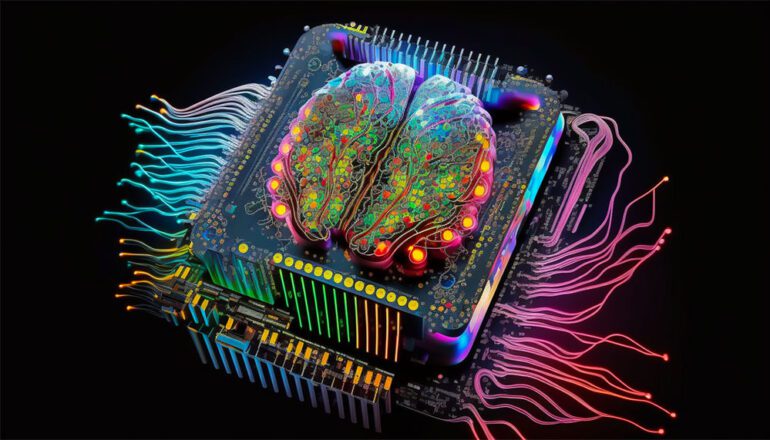TL;DR:
- ConScience AB secures 10MSEK in grants for pioneering projects.
- Project One focuses on Nanofluidic Scattering Microscopy (NSM) technology.
- Collaboration with Envue Technologies AB to develop a nanofluidic chip.
- Project Two revolves around neuromorphic computing, mimicking brain function.
- Collaboration with KTH aims to create photonic neuromorphic computing on the LNOI platform.
- Potential to disrupt the bioanalysis market with rapid biomolecule measurement.
- LNOI platform promises energy efficiency and superior performance for AI.
- These innovations have the potential to reshape industries.
Main AI News:
In a dynamic collaboration between ConScience AB, a Gothenburg-based powerhouse, and strategic partners, two substantial grants totaling 10MSEK have been secured. The primary focus of these grants is the development of cutting-edge nanofluidic imaging technology and the advancement of neuromorphic computing systems. The infusion of funds into these groundbreaking projects marks a significant stride toward pioneering technologies that will reshape industries.
Project One: Nanofluidic Scattering Microscopy (NSM)
ConScience joins forces with the Chalmers spin-out, Envue Technologies AB, in a venture to propel Nanofluidic Scattering Microscopy (NSM) technology to new heights. ConScience takes the helm in designing and fabricating the nanofluidic chip—a critical component for NSM detection. This project will see the creation of a single-molecule nanofluidic device, poised to revolutionize the field. The prototype will undergo rigorous validation and real-world testing in an industrially relevant setting, ensuring its readiness for commercial deployment.
ConScience’s extensive experience in microfluidic and nanofluidic applications has positioned them as leaders in custom-designed microfluidic systems and molds for cutting-edge biological research and fundamental polymer science. Their collaborative approach with clients aims to optimize comfort and flexibility for nanofluidic experiments. The system encompasses framed nanofluidic chips, chip holders, and a user-friendly pressurizing unit. These nanofluidic chips, crafted from materials such as glass, fused silica, and glass-silicon composites, exhibit exceptional biocompatibility and resilience in challenging environments, including exposure to aggressive chemicals and high temperatures.
Project Two: Revolutionizing Neuromorphic Computing
The second grant is a pioneering endeavor into neuromorphic computing—a realm where artificial neurons for micro and nanoelectronics mimic the intricate workings of the human brain. This departure from traditional transistor-based computing opens doors to alternative computing architectures and artificial intelligence (AI) solutions that mirror the problem-solving prowess of the human mind.
This visionary project, conducted in partnership with KTH and spearheaded by ConScience AB, is focused on developing photonic neuromorphic computing systems on a Lithium Niobate on Insulator (LNOI) platform. By doing so, it aims to overcome the limitations inherent in standard Silicon-based technologies. Embracing the “More than Moore” paradigm, this initiative combines integrated photonic, stochastic, and neuromorphic computing methodologies. The result promises unparalleled gains in energy efficiency and bandwidth performance, particularly advantageous for machine learning applications. The project’s emphasis on matrix multiplication operations—the primary energy consumers in today’s AI systems—positions it at the forefront of AI innovation.
While Silicon-on-Insulator (SOI) platforms have shown promise in transceiver development, they fall short in energy efficiency when applied to optical analog computing. The cumbersome energy requirements for tuning the weights in Photonic Integrated Circuits (PICs) have hindered the miniaturization of optical systems. LNOI emerges as a compelling alternative, offering low-loss propagation, energy-efficient electro-static switching, and the potential for dense integration with detectors and sources on a single chip platform.
Conclusion:
ConScience AB and its visionary partners are embarking on a transformative journey that will redefine the boundaries of nanofluidic imaging technology and revolutionize the landscape of neuromorphic computing. With innovation at the core of their mission, these projects hold the promise of shaping industries and driving progress on a global scale. Stay tuned for the remarkable advancements that lie ahead.

